XXV ACADEMIA
XXV Academia de Órgano
Fray Joseph de Echevarría
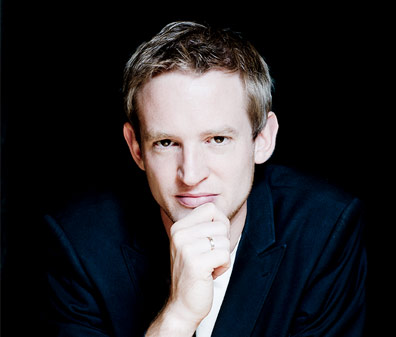
Matthias HAVINGA
Matthias Havinga es organista y pianista. Realizó sus estudios en el Conservatorio de Amsterdam como alumno de Jacques van Oortmerssen.
+ INFO
Masters of the North. A masterclass in Sweelinck, North German Baroque, Bach and Mendelssohn by Matthias Havinga
Jan Pieterszoon Sweelinck (1562-1621)
Samuel Scheidt (1587-1653)
Heinrich Scheidemann (1595-1663)
Dietrich Buxtehude (1637-1707)
Johann Sebastian Bach (1685-1750)
Felix Mendelssohn-Bartholdy (1809-1847)
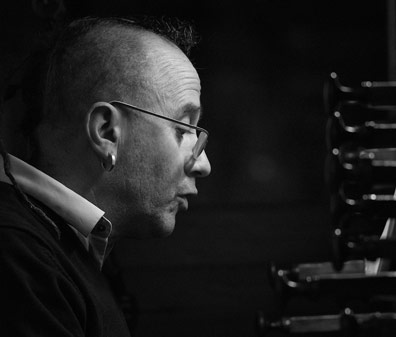
Jesús GONZALO
Durante más de treinta años de carrera, ha recorrido buena parte del mundo, desde Uruguay hasta el Líbano, pasando por Estonia o las Islas Azores, en cuatro continentes y casi todos los rincones de España, tañendo el órgano.
+ INFO
from the Council of Trent to the Mendizábal disentailment
This course is a unique opportunity to better understand the Aragonese organ school from the Renaissance to Classicism, a school that stands out among all those in Spain. Thanks to research, we can now know with certainty, or get closer to the knowledge of the instruments on which such great organists played. Thus, during the course, together with the interpretation criteria for the works, we will offer dispositions of the organs in which Aguilera played, in Huesca from 1585 and in Zaragoza from 1603; documented approach to Bruna in Daroca; those played by Lucas Puxol and Mariano Cosuenda in Tarazona, each in his time; or about those who exercised their position in La Seo de Zaragoza Jusepe Ximénez and Andrés de Sola (with certainty thanks to the new documentation found in the archive); or already, in the twilight of the 18th century and the first decades of the 19th, those who play Joseph Gil de Palomar or Ramón Ferreñac in Zaragoza cathedrals: an exceptional vision of the Aragonese organ school.
Antonio de Ribera (s. XVI)
Ave María
Melchor Robledo (†1586)
Domine Iesu Christe
Cristóbal Cortés (†1594)
Te lucis ante términum / In manus tuas
Sebastián Aguilera de Heredia (1561-1627)
Obra de 8º tono alto: Ensalada
Tiento grande de 4º Tono
Segundo registro bajo de 1er tono
Pange lingua a 3 sobre bajo por cesolfaut
Pange lingua a 3 sobre tiple: “La reina de los pange lingua”
Salve de lleno de 1er tono
Salve de 1er tono por delasolre
Falsas de 6º tono
Jusepe Ximenez (1601-1672)
Batalla de 6º tono
Juego de versos para el Himno de los apóstoles
Pablo Bruna (1611-1679)
Tiento de 2º tono por Gesolreut sobre la letanía de la Virgen
Tiento lleno de 6º tono sobre Ut re mi fa sol la
Batalla de 6º tono
Tiento de falsas de 2º tono
Dos versos sobre el Ave maris stella
Andrés de Sola (1634-1696)
Tiento de 4º tono
Primer tiento de 1er tono (partido de mano derecha)
Lucas Puxol (†1699)
Obra de 6º tono
Fray Pablo Nassarre (ca. 1655-ca. 1730)
Tiento a cuatro, partido de mando derecha
Joseph Gil de Palomar (†1796)
Lleno de 2º tono
Sonata de 5º tono (mano derecha)
Mariano Cosuenda (1737-1801)
6ª sonata
Rafael Anglés (1730-1816)
A la manera de aria: 4º verso de 3er tono / 4º verso de 1er tono
Ramón Ferreñac (1763-1832)
Variaciones del Señor Ferreñac
A quatro manos: Sonata I en sol mayor para órgano con clarines (1794)
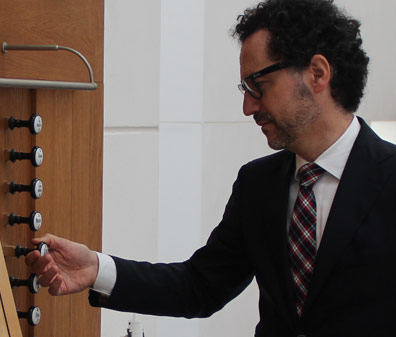
Óscar CANDENDO
Profesor de órgano en la Escola Superior de Música de Catalunya, Barcelona.
+ INFO
Tradition and renewal: the organ in Spain during the 19th century
In the 19th century, the transition from the Baroque to the Romantic organ took place in Spain or, to be more precise, the transition from the traditional Iberian organ into both an instrument and music more comparable to those in the rest of Europe.
The key person in this process is Hilarión Eslava. For this reason, our proposed repertoire is organized around Eslava and, in addition to his music, It includes previous authors whom he edited (José Lidón and Carlos Baguer), works by some of his favorite disciples (Ambrosio Arriola, Buenaventura Íñiguez and Felipe Gorriti), compositions by two of the latter’s students (Ignacio Busca de Sagastizábal and Eduardo Mocoroa), pieces by Federico Olmeda (a restless choirmaster in Burgos) and finally, and although it involves a transgression of the established time limits, Eduardo Torres, whose sesquicentennial we celebrate this year 2022.
Hilarión Eslava (1807-1878), ed.
Museo Orgánico Español II (ed. 1853)
José Lidón (1748-1827): Fuga sobre el canto del himno Sacris solemniis
Carles Baguer (1768-1808): Fuga sobre tema original
Hilarión Eslava: Fantasía religiosa el nacimiento de N. S. J. C.
Museo Orgánico Español I (ed. 1854)
Hilarión Eslava: Elevación N.º 4; Elevación N.º 5; Ofertorio N.º 2;
Ofertorio N.º 3
Ambrosio Arriola (1833-1863)
Elevación compuesta y dedicada al Sr. D.n Hilarión Eslava (ed. 1857)
Felipe Gorriti (1839-1896)
La Esperanza (ed. 1882)
Magnificat (ed. 1882)
Marche funèbre (ed. 1882)
Buenaventura Íñiguez (1840-1905)
Entrada de procesión (ed. 1882)
Federico Olmeda (1865-1909)
Oda para órgano (ed. 1903)
Fuga a quattro parti (ed. 1904)
Eduardo Mocoroa (1867-1959)
Introducción y Fuga (ed. 1909)
Ignacio Busca de Sagastizábal (1868-1950)
Melodía para órgano (ed. 1909)
Procedamus in pace (ed. 1909)
Eduardo Torres (1872-1934)
Saetas (ed. 1920)
Jubilate Deo (ed. 1922)
Ofertorio In modo antico (ed. 1930)
El organista español (ed. 1934)
Cantos íntimos II (op. Posth.)
Cantos íntimos III (op. Posth.)
The Academy will provide participants with an electronic copy of the scores, except for the Saetas by Eduardo Torres, available from the Boileau publishing house.
SEMINARS AND LECTURES
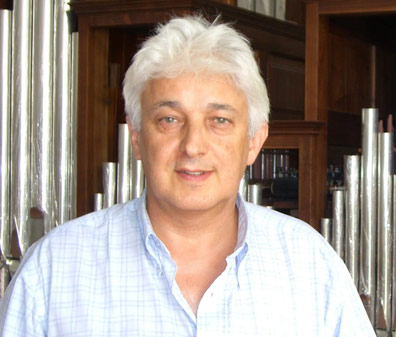
Federico ACITORES
+ INFO
The Hydraulis, ancestor of the modern organ, was developed and widely used from the middle of the third century BC, starting from the prototype of Ktesibius. It was always known of its existence, by the writings of ancient authors. But it was a total unknown until almost our days.
From the archaeological finds of the second half of the 19th century, its physiognomy was drawn thanks to innumerable objects (coins, medals, mosaics, vessels, lamps, funerary steles…) The discovery of the real remains of a hydraulis in Hungary, in 1931, it was definitive to understand its nature and operation.
The specimen built for the Villa Romana de la Olmeda (Palencia) is a new recreation of this instrument in which greater coherence with the construction techniques and musical practice of the time has been attempted.
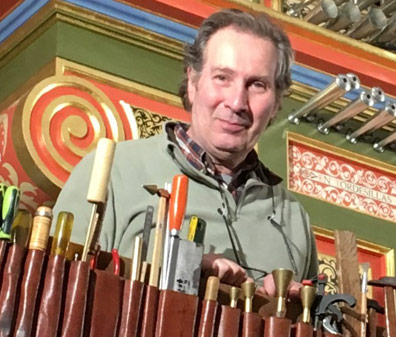
Joaquín LOIS
At the present time, the workshop consists stably of seven highly qualified people.
+ INFO
Restoration of the great Baroque organs: the historical moment
CLASSES
- The course will have a duration of 50 hours approximately.
- There will be a maximum of 12 active students.
- Academy proffesors will offer 45 minutes individual lessons to those students who request them. Enrollment for these classes will be held in strict order of registration.
- Some of the scores for the course can be provided on request.
ACCOMODATION
APPLICATION
Active participant: registration 150€
- Individual Lesson: 25€.
Bank: UNICAJA BANCO
Registration deadline: until 10th June, 2022.
INFORMATION
Plaza de San Pablo, 8 E-34005 – Palencia
Teléfono: (+34) 629 878 681
Correo electrónico: academiadeorganofje@gmail.com
www.aaopalencia.org
ORGANIZA

PATROCINA

Política de Privacidad
Aviso Legal
Política de Cookies
